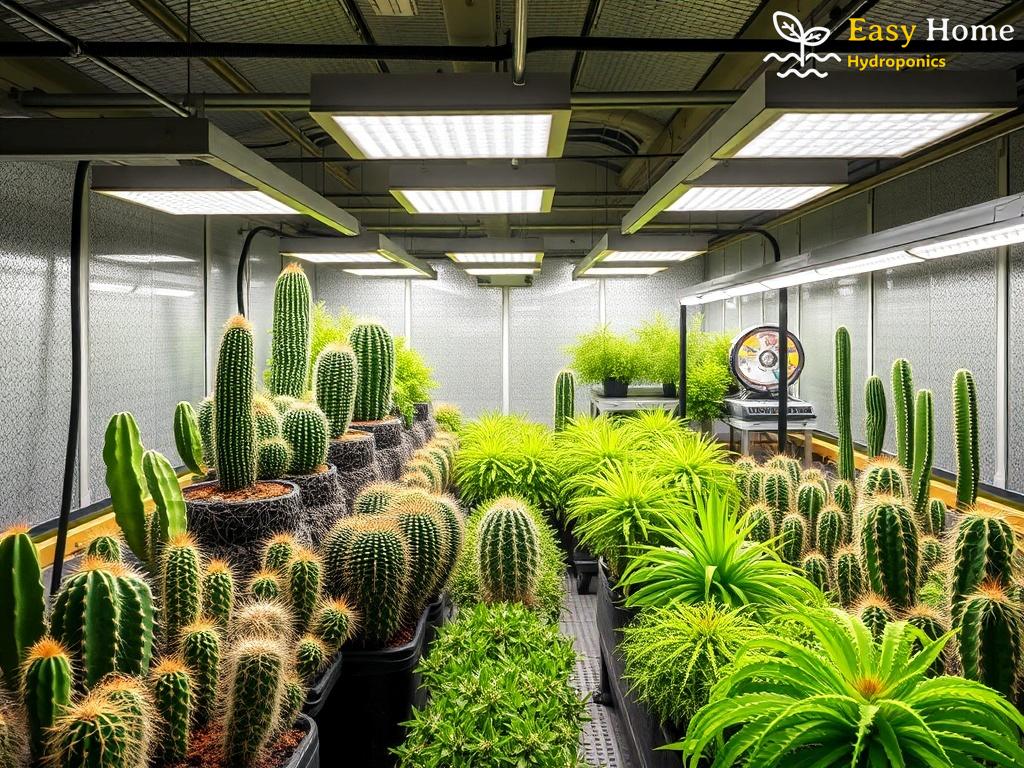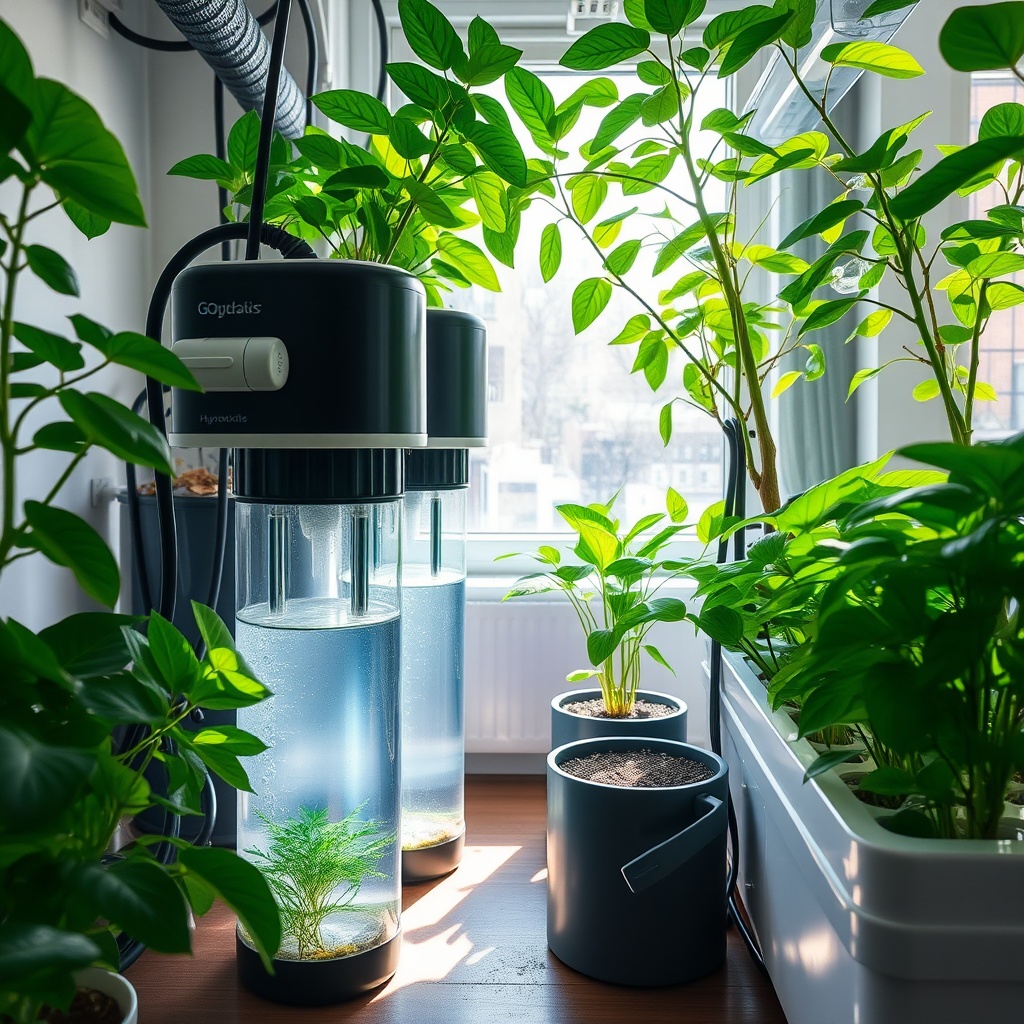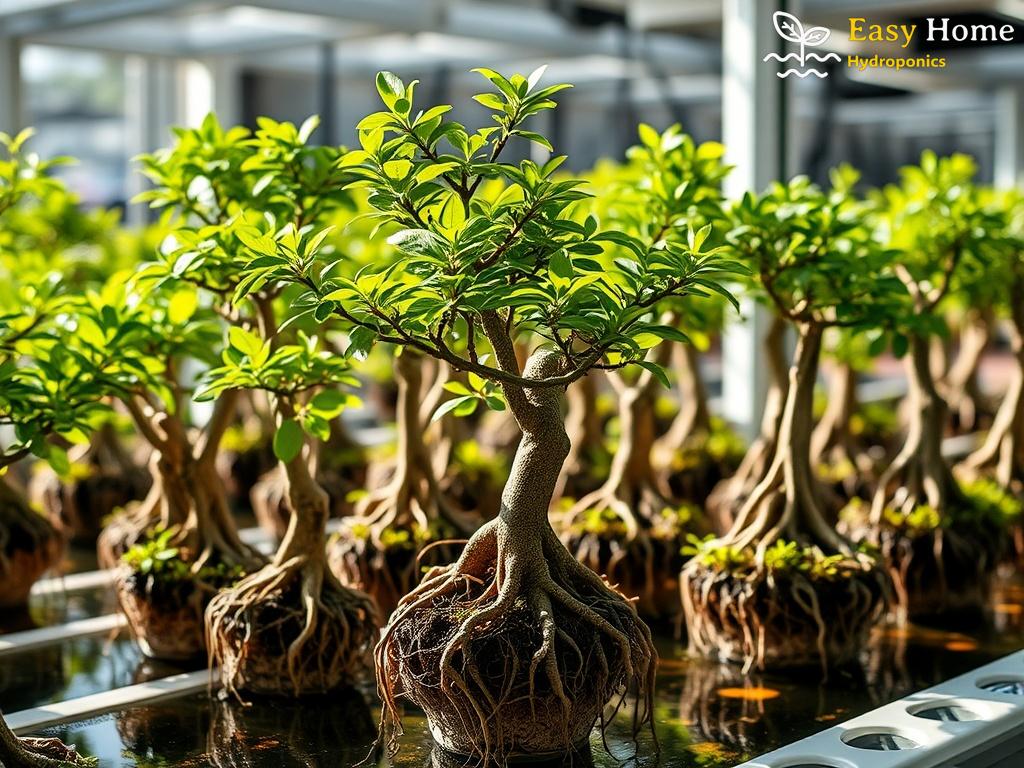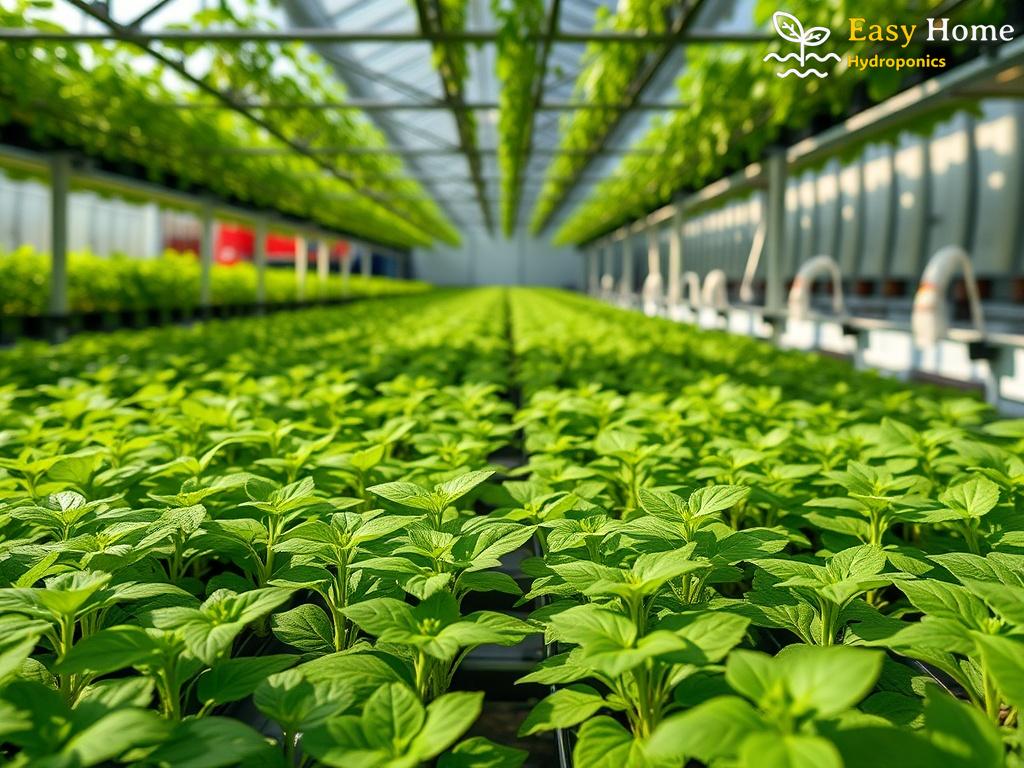Innovative Nutrient Solutions for Cactus Growth
As the world of hydroponic gardening expands, the unique needs of cacti have come into sharper focus. These resilient plants, known for their ability to thrive in arid environments, require specialized nutrient solutions when cultivated in a hydroponic system. Understanding the right balance of nutrients can lead to robust growth and stunning blooms, transforming your cactus garden into a vibrant oasis.
When it comes to nurturing cacti in a hydroponic setup, not all nutrients are created equal. Unlike conventional plants, cacti have distinct requirements that must be met to encourage healthy development. Below is a comprehensive list of essential nutrients that should be incorporated into your cactus nutrient solution:
- Nitrogen (N): Vital for vegetative growth but should be used sparingly to prevent excessive foliage.
- Phosphorus (P): Crucial for root development and flowering.
- Potassium (K): Supports overall plant health and stress resistance.
- Calcium (Ca): Important for cell wall structure and growth.
- Magnesium (Mg): A key component of chlorophyll production.
- Iron (Fe): Necessary for photosynthesis and enzyme function.
Creating an effective nutrient solution tailored for cacti involves careful consideration of the ratios of the essential nutrients listed above. Utilizing hydroponic nutrient formulations can be beneficial, but customization may yield even better results. Here’s a basic formula to get you started:
| Nutrient | Recommended Ratio |
|---|---|
| Nitrogen | 1 part |
| Phosphorus | 2 parts |
| Potassium | 2 parts |
| Calcium | 1 part |
| Magnesium | 1 part |
| Iron | 0.1 part |
Remember, the key to success lies in monitoring your plants’ responses and adjusting the nutrient concentrations accordingly. With patience and experimentation, you can develop a nutrient solution that maximizes your cacti’s growth potential.
Optimizing Light Conditions for Hydroponic Cacti
When diving into the fascinating world of hydroponic cactus cultivation, one cannot overlook the pivotal role that light plays in the overall health and vitality of these remarkable plants. While cacti are renowned for their ability to endure harsh sunlight in their natural habitats, replicating these conditions in a controlled environment is crucial for maximizing growth and flower production. Understanding how to manipulate light conditions can make all the difference in transforming your hydroponic setup into a thriving ecosystem.
Cacti are uniquely adapted to absorb sunlight efficiently, yet their light needs can vary significantly depending on the species. Most cacti thrive under full-spectrum light, typically ranging from 12 to 16 hours per day. Key factors influencing light requirements include the age, size, and specific type of cactus. Younger plants may require less intense light, while mature specimens often benefit from stronger illumination to encourage flowering and fruiting.
In a hydroponic setup, especially when natural sunlight is limited, artificial lighting becomes indispensable. Utilizing LED grow lights can be one of the most effective ways to provide the necessary spectrum without overheating your plants. These lights can mimic the sun’s rays and are energy-efficient, making them ideal for long-term use. Additionally, strategically positioning lights at an appropriate distance from the cacti can prevent issues such as leaf burn while ensuring that every plant receives adequate light.
As with any aspect of hydroponic farming, observation is key. Regularly monitoring your cacti’s response to light exposure is crucial. Signs of insufficient light include elongated stems and pale coloration, while too much light can lead to browning or curling. Adjusting the duration and intensity of light, along with utilizing reflective surfaces to enhance light distribution, can help create an optimal environment for your hydroponic cacti. By fine-tuning these conditions, cultivators can unlock the full potential of their plants, leading to lush growth and vibrant flowers.
Water Management Strategies in Hydroponics
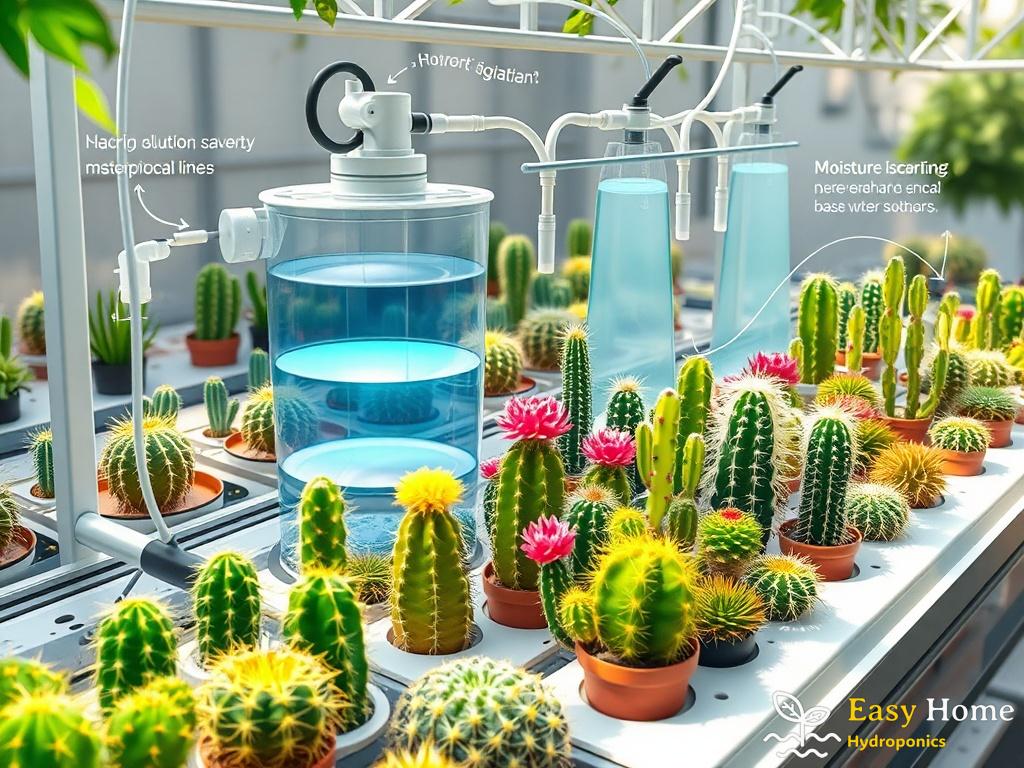
In the intricate world of hydroponic cactus cultivation, understanding water management is not just crucial; it is foundational for ensuring thriving plants. Unlike traditional gardening, where soil acts as a reservoir for water, hydroponics requires a meticulous approach to hydration, harnessing the benefits of water while avoiding pitfalls such as root rot and nutrient leaching. This article delves into innovative water management strategies that can elevate your cactus cultivation game to new heights.
When it comes to watering cacti in a hydroponic system, precision is key. Drip irrigation stands out as one of the most effective methods, allowing for controlled water delivery directly to the roots. This technique minimizes waste and ensures that your cacti receive the exact amount of moisture they need. Moreover, employing a timer can help automate this process, leading to consistent hydration without the risk of overwatering.
Another fascinating strategy is the use of sub-irrigation, where water is supplied from below through a reservoir. This method encourages roots to reach down for moisture, promoting robust root development and enhancing the plant’s overall stability. By experimenting with different irrigation methods, cultivators can discover which works best for their specific cactus species and hydroponic setup.
Water quality is paramount in the hydroponic environment. Regularly monitoring the pH levels and electrical conductivity (EC) of your water is essential to ensure optimal nutrient uptake. Cacti prefer slightly acidic to neutral pH levels, typically between 6.0 and 7.0. Deviations from this range can lead to nutrient deficiencies or toxicities, stunting growth and reducing flower production.
In addition, keeping an eye on the water’s EC helps gauge nutrient concentration. High EC levels can indicate an overload of nutrients, while low levels may suggest that your cacti are not receiving enough. To maintain healthy plants, consider implementing a regular testing schedule, adjusting nutrient solutions as needed to keep your cacti flourishing.
Establishing a balanced watering schedule is crucial in the context of hydroponic cactus cultivation. These resilient plants thrive in drier conditions, and overwatering can lead to detrimental effects. A useful strategy involves observing your plants closely; signs of stress such as drooping or discoloration can indicate the need for adjustments. Implementing a cycle of dry and wet periods can help mimic the natural habitat of cacti, promoting stronger, healthier growth.
Ultimately, the key to successful water management lies in understanding the unique needs of your specific cactus species. By tailoring your approach to water delivery, monitoring quality, and establishing a consistent schedule, you can create a thriving hydroponic environment that not only sustains but also enhances the beauty and vitality of your cacti. With these advanced techniques, your hydroponic garden can blossom into a stunning display of nature’s resilience.
Pest Control Techniques for Hydroponic Cacti
In the realm of hydroponic cactus cultivation, protecting your plants from pests is essential for ensuring their health and vitality. Unlike traditional soil gardening, hydroponic systems can create a perfect environment for certain pests to thrive. This necessitates an understanding of both the specific vulnerabilities of cacti and the most effective pest control strategies. By integrating proactive and reactive measures, you can maintain a thriving hydroponic garden that showcases your cacti in their full glory.
When it comes to pest control in hydroponic systems, striking a balance between natural and chemical solutions is paramount. Many cultivators lean towards natural remedies such as neem oil or insecticidal soap, which can effectively combat common pests like spider mites and aphids without compromising the delicate balance of nutrients your cacti rely on. These organic options are often less harmful to beneficial insects, allowing for a more holistic approach to pest management.
On the other hand, certain situations may demand the use of chemical pesticides, especially in severe infestations. It’s crucial, however, to choose products that are specifically formulated for hydroponics and safe for cacti. Always follow the manufacturer’s guidelines to prevent any adverse effects on your plants. Furthermore, applying treatments during the evening can reduce the risk of burning your cacti, as the cooler temperatures allow for better absorption.
Prevention is undeniably better than cure, particularly in the delicate ecosystem of hydroponic cactus cultivation. Regularly inspecting your plants is a key step in identifying pest problems before they escalate. Look for tell-tale signs such as discolored spots, webbing, or unusual markings on the leaves. Implementing preventive measures, such as maintaining proper humidity levels and ensuring good air circulation, can deter pests from making your cacti their home.
Moreover, introducing beneficial insects like ladybugs or predatory mites can create a natural defense system against harmful pests. These allies not only help keep pest populations in check but also promote a balanced ecosystem within your hydroponic setup. With a combination of vigilant monitoring and strategic interventions, you can ensure that your cacti remain healthy and vibrant, free from the threat of pests.
Maximizing Space: Vertical Hydroponics for Cacti
As urban gardening gains traction, space becomes a precious commodity for enthusiasts of hydroponic cactus cultivation. Enter vertical hydroponics—a revolutionary method that not only conserves space but also optimizes growth conditions for these unique desert dwellers. By harnessing the power of vertical gardening, you can create a lush, multi-layered oasis of cacti, transforming any limited area into a vibrant green sanctuary.
When it comes to vertical hydroponics, creativity knows no bounds. There are various designs you can implement, allowing for efficient use of vertical space while ensuring each plant receives adequate light and nutrients. Options include:
- Stacked Planters: Utilize tiered shelving or stacked planters to create a multi-level growing space. This setup allows for maximum exposure to light and minimizes the footprint required.
- Wall-mounted Systems: Transform walls into living canvases by installing wall-mounted hydroponic systems. These can include pockets for soil-less growth or hydroponic tubes that deliver nutrients directly to the roots.
- Hanging Gardens: Employ hanging baskets or vertical garden towers that allow cacti to cascade downwards, creating a stunning visual effect while maximizing space.
Strategic plant placement is essential to ensure that all cacti receive sufficient light and airflow. Consider the following factors when arranging your vertical system:
- Light Requirements: Position taller cacti at the top of your vertical setup to avoid shading smaller plants below. Ensure that all levels receive adequate light, whether from natural sunlight or artificial sources.
- Growth Habits: Be mindful of individual species’ growth habits. Some cacti may spread out while others grow upright. Mixing these can add visual interest while still adhering to space-saving principles.
Embracing vertical hydroponics offers numerous advantages for cactus cultivation:
- Space Efficiency: Maximize limited square footage, allowing you to cultivate a diverse range of cacti in a compact area.
- Improved Air Circulation: Vertical setups promote better airflow, reducing the risk of pests and diseases that thrive in stagnant environments.
- Enhanced Aesthetics: A well-designed vertical garden serves as a stunning focal point, showcasing your cacti in an eye-catching manner.
Incorporating vertical hydroponics into your cactus gardening strategy not only conserves space but also enhances the overall health and appearance of your plants. With a little imagination and the right approach, you can unlock the full potential of your hydroponic cactus garden.

